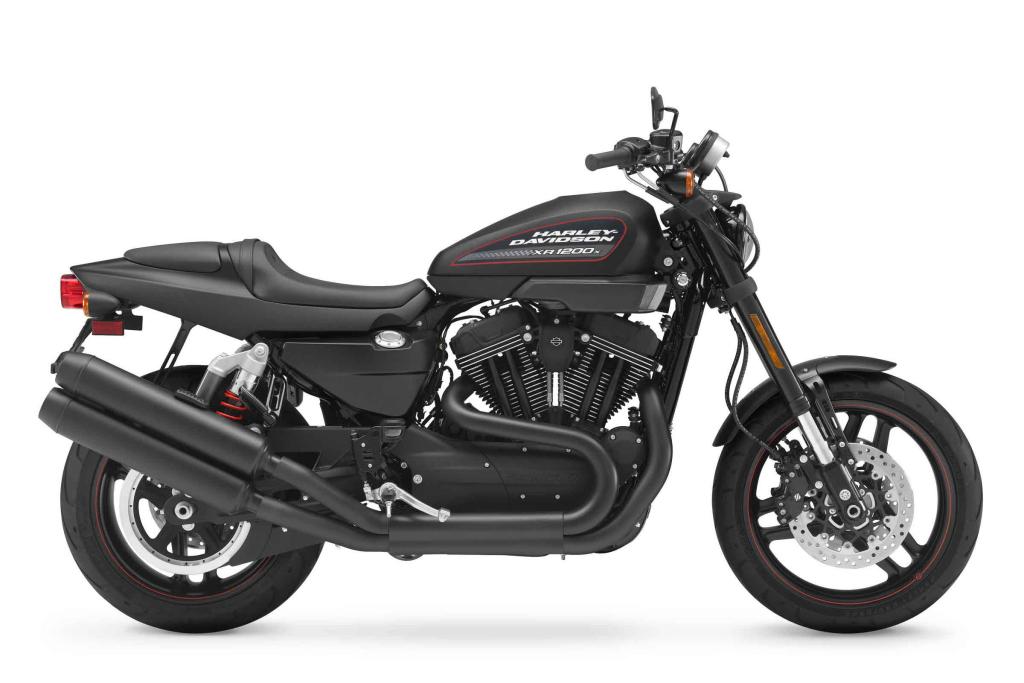HARLEY-DAVIDSON REPORTS BROAD PERFORMANCE IMPROVEMENT IN SECOND QUARTER Earnings Climb to $0.81 Per Share on Motorcycle Shipment Growth, Improved Operating Margin for Motorcycles and Financial Services Worldwide Harley-Davidson® Retail New Motorcycle Sales Rise, Driven by 7.5 Percent Growth in U.S. Company Raises Guidance for Motorcycle Shipments MILWAUKEE, July 19, 2011 — Harley-Davidson, Inc. (NYSE: HOG) generated broad performance improvements in the second quarter of 2011, with strong earnings growth, increased shipments and growth in its dealers’ new motorcycle sales both in the U.S. and globally. Income from continuing operations in the second-quarter 2011 rose 36.8 percent to $190.6 million, or $0.81 per share, compared to income of $139.3 million, or $0.59 per share from continuing operations in the year-ago quarter. Second-quarter 2011 earnings results were led by operating income from the Motorcycles and Related Products, which grew 39.2 percent to $219.8 million on higher shipment volume and operating margin improvement. Operating income from the Financial Services grew 34.9 percent, compared to the second quarter of 2010. Retail sales of new Harley-Davidson motorcycles grew 7.5 percent in the U.S. and 5.6 percent worldwide in the second quarter. The Company raised its shipment forecast for 2011 and now expects to ship between 228,000 and 235,000 new Harley-Davidson motorcycles to dealers and distributors worldwide, an increase of 8 percent to 12 percent compared to 2010 shipments. For the first six months of 2011, Harley-Davidson income from continuing operations was up 48.9 percent compared to the year-ago period to $309.8 million, or $1.31 per share. “Harley-Davidson continues to make great progress as we transform our business and take our iconic brand to the many roads of the world,” said Keith Wandell, President and Chief Executive Officer of Harley-Davidson, Inc. “While we are pleased by Harley-Davidson’s second-quarter results, including the strong jump at retail in the U.S., our focus remains squarely on sustaining this progress through the ongoing implementation of our business strategy. “Through the transformation to best-in-class manufacturing, product development and retail capabilities, we are positioning Harley-Davidson to be customer-led in all we do. Our employees, dealers and suppliers deserve tremendous credit for their dedication to making customers’ dreams a reality by delivering remarkable products and extraordinary customer experiences,” Wandell said. “We also believe the continued improvement in our results in the face of ongoing consumer and economic uncertainty speaks to the power of the Harley-Davidson brand globally,” Wandell said. Retail Harley-Davidson Motorcycle Sales On a worldwide basis, second-quarter retail Harley-Davidson new motorcycle sales grew 5.6 percent compared to last year’s second quarter. Dealers sold 53,599 new Harley-Davidson motorcycles in the U.S., a 7.5 percent increase compared to last year’s second quarter and the first year-over-year quarterly rise in U.S. Harley-Davidson new motorcycles sales since the fourth quarter of 2006. Retail sales of 29,797 new motorcycles in international markets in the second quarter marked an increase of 2.4 percent compared to the year-ago period. Industry-wide U.S. heavyweight new motorcycle (651cc-plus) retail unit sales increased 4.2 percent in the second quarter of 2011 compared to the year-ago period. Through six months, worldwide retail sales of new Harley-Davidson motorcycles increased 4.8 percent to 132,991 units compared to the prior-year period. U.S. retail sales of new Harley-Davidson motorcycles increased 4.4 percent to 85,290 units for the first half of the year compared to the year-ago period. In international markets, retail sales of new Harley-Davidson motorcycles increased 5.6 percent to 47,701 units for the first six months of 2011 compared to 2010. Through six months, industry-wide U.S. heavyweight new motorcycle (651cc-plus) retail unit sales increased 3.8 percent, compared to the year-ago period. Second-quarter and first-half data are listed in the accompanying tables. Harley-Davidson Motorcycles and Related Products Segment Financial Results Second-Quarter Segment Results: Revenue from Harley-Davidson Motorcycles during the second quarter of 2011 of $1.01 billion was up 20.9 percent compared to the year-ago period. The Company shipped 66,815 Harley-Davidson motorcycles to dealers and distributors worldwide during the quarter, compared to shipments of 59,046 motorcycles in the second quarter of 2010. Revenue from Motorcycle Parts and Accessories (P&A) totaled $255.4 million during the quarter, up 10.2 percent, and revenue from General Merchandise, which includes MotorClothes® Apparel and Accessories, was $72.9 million, up 8.2 percent compared to the year-ago period. Gross margin was 35.0 percent in the second quarter, flat to the year-ago period. Second-quarter operating margin was 16.4 percent, compared to 13.9 percent in the second quarter of 2010. Six-Month Segment Results: Through the first six months of 2011, the Company shipped 120,642 new Harley-Davidson motorcycles to dealers and distributors, a 7.0 percent increase compared to last year’s 112,720 units for the period. Revenue from Harley-Davidson Motorcycles through six months was $1.84 billion, a 12.1 percent increase compared to the year-ago period. Six-month P&A revenue was $419.7 million, a 10.2 percent increase from the first half of 2010. General Merchandise revenue was $135.5 million, a 1.4 percent increase compared to the same period in 2010. Gross margin through six months was 34.1 percent and operating margin was 14.4 percent, compared to 35.7 percent and 13.1 percent respectively in last year’s first half. Financial Services Segment The Financial Services segment recorded operating income of $82.0 million in the second quarter, compared to operating income of $60.8 million in the year-ago quarter. The increase in year-over-year operating income was largely the result of continued improvement in credit performance. Through six months, operating income from financial services was $150.0 million, compared to operating income of $87.5 million in the first half of 2010. Guidance The Company raised shipment guidance for 2011 and now expects to ship 228,000 to 235,000 Harley-Davidson motorcycles to dealers and distributors worldwide, compared to guidance provided April 19, 2011 of 215,000 to 228,000 motorcycles. In the third quarter of 2011, the Company expects to ship 60,000 to 65,000 motorcycles. For all of 2010, the Company shipped 210,494 motorcycles. The change in shipment guidance reflects ongoing efforts to manage supply in line with demand following strong second-quarter retail sales, as well as the Company’s increased confidence in its ability to minimize the impact of potential supply chain interruptions resulting from the March earthquake in Japan. Harley-Davidson now expects gross margin to be between 34.0 percent and 35.0 percent for the full year, versus the prior estimate of 33.5 percent to 35.0 percent. The Company continues to expect full-year capital expenditures of between $210 million and $230 million, which includes $70 million to $85 million to support restructuring activities. Restructuring Update Harley-Davidson has reduced the cost estimates for restructuring activities and now expects all previously announced company-wide restructuring activities to result in one-time charges of $490 million to $505 million, including 2011 charges of $80 million to $90 million. The Company continues to expect to realize savings on a cumulative basis in 2011 of $210 million to $230 million from restructuring activities initiated since early 2009, and annual ongoing savings of $305 million to $325 million when the restructuring is fully implemented. Through the first six months of 2011, the Company incurred restructuring charges of $36.6 million, including $13.6 million in the second quarter. Income Tax Rate Through six months, the Company’s effective tax rate was 34.8 percent, compared to 36.4 percent in the year-ago period. The 2010 effective tax rate through the second quarter was negatively impacted by the healthcare reform legislation offset by a favorable settlement of an IRS audit. In 2011, the Company expects its full-year effective tax rate from continuing operations to be approximately 35.0 percent. Cash Flow Cash and marketable securities totaled $1.22 billion as of June 26, 2011, compared to $1.50 billion at the end of last year’s second quarter. During the first six months of 2011, Harley-Davidson generated $473.0 million of cash from operating activities, which included a $200.0 million contribution to company pension plans. In the first half of 2010, the Company generated $726.0 million of cash from operating activities. Capital expenditures were $69.3 million for the six months ended in June 2011. Company Background Harley-Davidson, Inc. is the parent company of Harley-Davidson Motor Company and Harley-Davidson Financial Services. Harley-Davidson Motor Company produces heavyweight custom, cruiser and touring motorcycles and offers a complete line of Harley-Davidson motorcycle parts, accessories, riding gear and apparel, and general merchandise. Harley-Davidson Financial Services provides wholesale and retail financing, insurance, extended service and other protection plans and credit card programs to Harley-Davidson dealers and riders in the U.S., Canada and select European countries. For more information, visit Harley-Davidson’s Web site at www.harley-davidson.com. Conference Call and Webcast Presentation Harley-Davidson will discuss second-quarter results on a Webcast at 8:00 a.m. CT today. The Webcast presentation will be posted prior to the call and can be accessed at http://investor.harley-davidson.com/. Click “Events and Presentations” under “Resources.” Forward-Looking Statements The Company intends that certain matters discussed in this release are “forward-looking statements” intended to qualify for the safe harbor from liability established by the Private Securities Litigation Reform Act of 1995. These forward-looking statements can generally be identified as such because the context of the statement will include words such as the Company “believes,” “anticipates,” “expects,” “plans,” or “estimates” or words of similar meaning. Similarly, statements that describe future plans, objectives, outlooks, targets, guidance or goals are also forward-looking statements. Such forward-looking statements are subject to certain risks and uncertainties that could cause actual results to differ materially from those anticipated as of the date of this release. Certain of such risks and uncertainties are described below. Shareholders, potential investors, and other readers are urged to consider these factors in evaluating the forward-looking statements and cautioned not to place undue reliance on such forward-looking statements. The forward-looking statements included in this release are only made as of the date of this release, and the Company disclaims any obligation to publicly update such forward-looking statements to reflect subsequent events or circumstances. The Company’s ability to meet the targets and expectations noted depends upon, among other factors, the Company’s ability to (i) execute its business strategy, (ii) effectively execute the Company’s restructuring plans within expected costs and timing, (iii) implement and manage enterprise-wide information technology solutions, including solutions at its manufacturing facilities, and secure data contained in those systems (iv) anticipate the level of consumer confidence in the economy, (v) continue to realize production efficiencies at its production facilities and manage operating costs including materials, labor and overhead, (vi) successfully implement with our labor unions the agreements that we have executed with them that we believe will provide flexibility and cost-effectiveness to accomplish restructuring goals and long-term competitiveness, (vii) manage supply chain issues, including the ability of several Company suppliers to execute short-term and long-term contingency plans for maintaining supply, or obtaining alternate supply, of certain components and sub-components currently manufactured in Japan, (viii) manage production capacity and production changes, (ix) provide products, services and experiences that are successful in the marketplace, (x) develop and implement sales and marketing plans that retain existing retail customers and attract new retail customers in an increasingly competitive marketplace, (xi) manage the risks that our independent dealers may have difficulty obtaining capital and managing through unfavorable economic conditions and consumer demand, (xii) continue to have access to reliable sources of capital funding and adjust to fluctuations in the cost of capital, (xiii) manage the credit quality, the loan servicing and collection activities, and the recovery rates of HDFS’ loan portfolio, (xiv) sell all of its motorcycles and related products and services to its independent dealers, (xv) continue to develop the capabilities of its distributor and dealer network, (xvi) manage changes and prepare for requirements in legislative and regulatory environments for its products, services and operations, (xvii) adjust to fluctuations in foreign currency exchange rates, interest rates and commodity prices, (xviii) adjust to healthcare inflation and reform, pension reform and tax changes, (xix) retain and attract talented employees, and (xx) detect any issues with our motorcycles or manufacturing processes to avoid delays in new model launches, recall campaigns, increased warranty costs or litigation. In addition, the Company could experience delays or disruptions in its operations as a result of work stoppages, strikes, natural causes, terrorism or other factors. Other factors are described in risk factors that the Company has disclosed in documents previously filed with the Securities and Exchange Commission. Many of these risk factors are impacted by the changing capital, credit and retail markets and our ability to manage through inconsistent economic conditions. The Company’s ability to sell its motorcycles and related products and services and to meet its financial expectations also depends on the ability of the Company’s independent dealers to sell its motorcycles and related products and services to retail customers. The Company depends on the capability and financial capacity of its independent dealers and distributors to develop and implement effective retail sales plans to create demand for the motorcycles and related products and services they purchase from the Company. In addition, the Company’s independent dealers and distributors may experience difficulties in operating their businesses and selling Harley-Davidson motorcycles and related products and services as a result of weather, economic conditions or other factors.
Harley-Davidson Reports Increased Motorcycle Sales, Earnings During Second Quarter
Harley-Davidson Reports Increased Motorcycle Sales, Earnings During Second Quarter
© 2011, Roadracing World Publishing, Inc.






